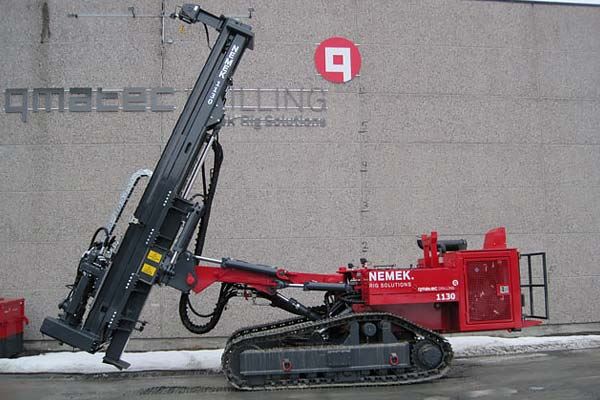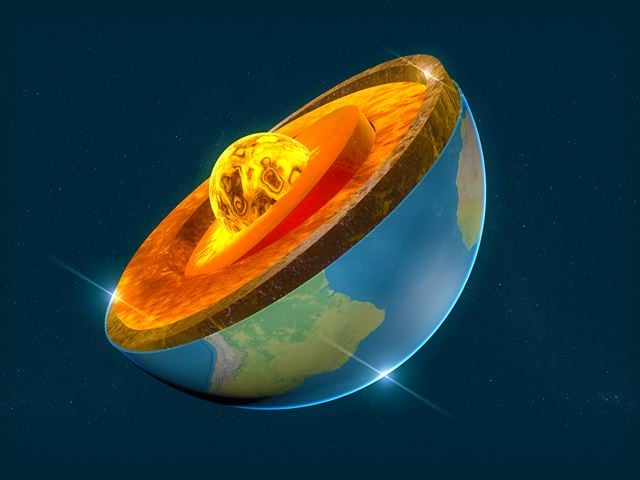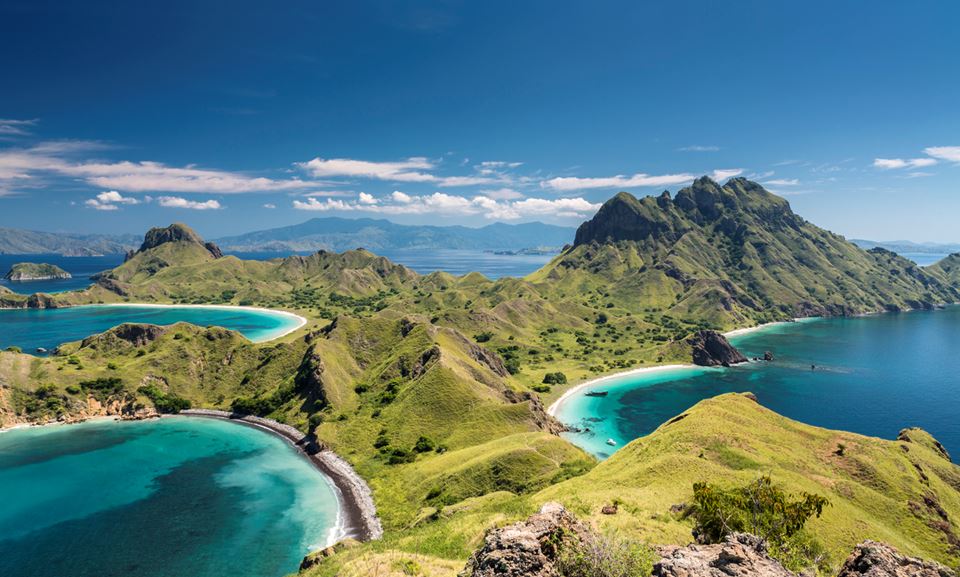The solution is to be found far below the earth’s surface in the form of geothermal energy: Around 99 per cent of the planet’s mass is at a temperature of more than 1000 degrees Celsius. This heat can be converted to electrical energy.
It has long been known that by drilling down and recovering a small fraction of this geothermal energy, it is possible to meet the whole world’s energy needs, with absolutely no CO2 emissions.
The plan is now to test a new method for doing this in Indonesia, the fourth most populous country in the world.
This involves some major challenges. To fulfil this potential we have to be able to drill to depths that test the limits of materials and technology, since greater depth means higher temperature, and thus greater energy output.
Such drilling operations will also have an impact on the natural environment, requiring an extensive road and port infrastructure to enable the transport of rigs to the drilling sites.
For example, a normal drilling rig will require clearing an area of forest measuring 70 by 120 metres. It also weights 1000 tonnes, which puts great strain on the roads and vehicles used in transport.
How do we carry out such complex operations without significant environmental impact in a country whose infrastructure is relatively undeveloped, and where existing systems supply electricity for only a few hours each day?
“The solution turned out to be a mobile rig which can penetrate to reservoir depths at only 30 per cent of the cost and with 10 per cent of the fuel consumption of a normal rig.”
Geir Hagalinsson, CEO of North Tech Energy, Iceland
The solution emerged at a meeting whose agenda was completely different – what can the Norwegian supply industry do to revitalise and develop its operations when supplier demand in the oil and gas sector is low?
The geothermal energy industry exploits heat from the earth’s interior, using wells that produce hot water or steam. This is used for heating or for electricity generation. A distinction is usually made between shallow and deep geothermal wells. Shallow geothermal energy is used in Norway for small plants serving private homes, and the use of larger and deeper heating plants is on the increase. Deep geothermal generation is associated with the production of electricity using turbines powered by high-temperature steam or gas, and takes place only in areas with volcanic activity, such as Iceland. In Europe alone there are at least 100 geothermal power stations with a total capacity of 2.5 GWe. Geothermal remote heating facilities in Europe have a capacity of 4.8 GWth.Key facts – Geothermal energy
Stimulated by the oil crisis
The meeting was arranged by SINTEF and the industrial cluster GCE NODE, which together had established an arena for the development of new potential for the Norwegian supply industry. Naturally, this sector experienced a drop in demand when the oil price fell so drastically in 2014.
“During the oil crisis, we at GCE NODE began to look into how our members’ technological expertise could be transferred to other sectors,” says Marianne Engvoll, GCE NODE’s Manager of Research, Development and Innovation.
In collaboration with SINTEF we began to organise an annual workshop to develop new approaches, and it was during the meeting in 2017 that things began to happen:
At that meeting the Norwegian suppliers were visited by an Icelandic contractor with big ideas.”
“I was actually there to present our offshore project for suppliers which I knew had specialist expertise in subsea technology,” says Geir Hagalinsson, CEO of North Tech Energy in Iceland.

This is the rig that makes it possible to drill for geothermal energy at a fraction of the normal cost. Photo: Qmatec
“I returned home with renewed hope that it might be possible to develop geothermal energy in remote areas such as the islands of Southeast Asia, where infrastructure is poorly developed and the potential for energy generation is low.”
Among the companies attending the meeting was the Norwegian drilling contractor Qmatec.
“Our job has always been to supply rigs for oil and gas operations, but we also want to have development projects in progress to enable us to explore new markets in the longer term,” says Kjell Arild Grønås, CEO of Qmatec Drilling.
He met Hagalinsson during the 2017 network meeting. Eighteen months later Qmatec had a solution for getting a drilling rig to remote areas with no available infrastructure and services.
The solution turned out to be a mobile rig that can penetrate to reservoir depths at only 30 per cent of the cost and with 10 per cent of the fuel consumption of a normal rig.
SINTEF has participated in the project ever since the meeting in 2017, its role being to define the technological issues. Materials scientists at SINTEF Industry have in fact been working with geothermal energy for many years. As early as 2010 it shared its ideas on realising the potential of this renewable energy source.
“There is no doubt that if we succeed in replacing diesel with geothermal energy using minimal infrastructure and with limited environmental damage, it will have an enormous effect on climate accounting.”
Kjell Arild Grønås, Qmatec Drilling
“Looking ahead, we intend to work on many technical issues associated, for example, with optimisation of the drilling bit weight,” says Virgile Delhaye at SINTEF Industry. We intends to:
- develop sensor technology for measuring temperature and pressure in real time at the location of the drilling bit
- determine what materials will be most suitable for optimising pipes for use in this type of production
- develop a system for evaluating loss of circulation. This will provide us with more information about the geological properties of the reservoir.
Supplying Indonesia with clean energy
The plan is now to use this technology to supply the population of Indonesia with clean energy. The country consists of almost 17,500 islands, of which around 6,000 are populated. Many of these are known for their lack of infrastructure, and where electricity is available it is supplied by diesel generators.

Around 99 per cent of the planet’s mass is at a temperature of more than 1000 degrees Celsius. This heat can be converted to environmentally friendly energy. This provides hope for developing countries. Illustration: iStock
“There is no doubt that if we succeed in replacing diesel with geothermal energy using minimal infrastructure and with limited environmental damage, it will potentially have enormous effects on climate accounting. We need to think about the environment. There are great gains to be made there,” says Kjell Arild Grønås of Qmatec Drilling.
The project will have an impact on several systems of accounting. Just as the Norwegian authorities decided when oil was discovered in the North Sea, the Indonesian authorities have made it a condition that projects must trigger local employment and wealth creation. We also recognise the social development that followed Norway’s success with hydroelectricity.
“Some of the surplus this will create will be allocated to the benefit of society. Businesses that can benefit from this electricity will thrive and this will form the foundation for the establishment of many new industries in Indonesia. Hopefully we will see the creation of a significant number of jobs,” says Geir Hagalinsson.
Both Grønås and Hagalinsson see a promising future for geothermal energy now that Indonesia is so close to getting started in this field. Qmatec is currently investigating the potential for participating in European research projects.
“In collaboration with research partners such as SINTEF, we can identify both the potential and the challenges linked to the project. We have access to a network of other operators who are working with various parts of the value chain. In projects like this there are many technologies that must communicate with each other and we will always be on the lookout for new methods that enable us to drill deeper. We envisage that this will be a major market and that we will find solutions for such complex operations in collaboration with other operators,” Kjell Arild Grønås explains.
Next time the price of oil falls dramatically, Hagalinsson hopes that the innovation triggered by the previous crisis will lead to a different response.
“My vision for the future is that a lower oil price will result not in greater demand, but in increased investment in renewable solutions. The major oil companies ought to receive more than 50 per cent of their revenues from renewable energy within 20-30 years,” says Hagalinsson.

